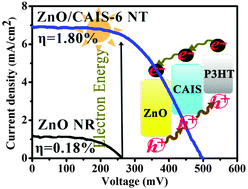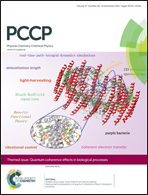Inorganic–organic solar cells based on quaternary sulfide as absorber materials
Abstract
We report a novel promising quaternary sulfide (CuAgInS) to serve as a semiconductor sensitizer material in the photoelectrochemical field. In this study, CuAgInS (CAIS) sulfide sensitized ZnO nanorods were fabricated on ITO substrates through a facile and low-cost hydrothermal chemical method and applied on photoanodes for solar cells for the first time. The component and stoichiometry were key factors in determining the photoelectric performance of CAIS sulfide, which were controlled by modulating their reaction time. ZnO/Cu0.7Ag0.3InS2 nanoarrays exhibit an enhanced optical and photoelectric performance and the power conversion efficiency of ITO/ZnO/Cu0.7Ag0.3InS2/P3HT/Pt solid-state solar cell was up to 1.80%. The remarkable performance stems from improved electron transfer, a higher efficiency of light-harvesting and appropriate band gap alignment at the interface of the ZnO/Cu0.7Ag0.3InS2 NTs. The research indicates that CAIS as an absorbing material has enormous potential in solar cell systems.


 Please wait while we load your content...
Please wait while we load your content...